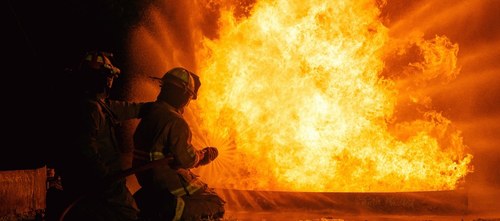The Top 5 Firestopping Materials for Your Next Project
Author: Amy Freeman | April 8, 2025
When it comes to commercial buildings, safety should be at the front of any contractor's mind, particularly fire safety.
In the event of a fire, it's important to find a way not only to put a stop to it, but also to keep it, and any associated smoke, from spreading.
To help slow the spread of fire and buy occupants and adjacent construction time, building codes in the U.S. require perimeter fire containment systems to use firestopping materials that meet ASTM E2307, Standard Test Method for Determining Fire Resistance of Perimeter Fire Barriers Using Intermediate Scale, Multi-story Test Apparatus.
Knowing what materials to use to slow down or stop a fire is just the start. As a contractor, you must also know how to install the materials correctly, to ensure they're able to do their job.

What Firestopping Does
According to the Firestop Contractors International Association, firestopping promotes building resilience by protecting against the spread of fire and smoke within a building and from building to building. Properly installed firestopping systems protect building occupants during an emergency evacuation or if they must shelter in place. The system can also protect property and allow for the continued operation of the building or businesses after a fire.
The Top Firestopping Materials
Firestopping materials work together as part of a system, and each system needs to undergo and pass testing, performed by a third-party organization, to verify its efficacy and performance under intense conditions. These materials are commonly included in a passive fire containment (PFC) system — here's how they work together.
1. Mineral Wool Insulation
Mineral wool insulation is known for being fire-resistant while also potentially repelling water and absorbing noise. When it's used with a PFC, it must be designed specifically to resist fire.
To pass ASTM E2307, mineral wool insulation needs to be able to withstand temperatures of more than 982 degrees Celsius (1,800 degrees Fahrenheit) and direct flame impingement, all while maintaining its stability. The ASTM E2307 tests puts mineral wool insulation up against the same pressure and high temperatures that would occur during a high-rise fire.
2. Hangers
To remain in place during a fire, insulation requires the right type of support system. Fire-resistant hangers, which live up to ASTM E2307, will hold the insulation in place, keeping it secure even through a lot of movement. The hangers need to be made from a material that can withstand high heat and flame for several hours.
3. Mullion Covers
In commercial buildings, walls are often framed with aluminum, which can melt when exposed to high heat. Mullion covers are made from mineral wool and are used to cover the aluminum frames, creating a protective vapor barrier when taped and foil-faced.
4. Backer/Reinforcement Support
Without the proper support, the insulation can bow between the floor and the exterior, reducing the efficacy of a fire protection system. Reinforcement or backer support typically includes L-angle, T-bar or hat channels made from galvanized steel, which rest behind the insulation, aligned with the floor. During a fire, the reinforcement support keeps the insulation in place.
5. Firestop Sealants
Also known as smoke barriers, Firestop Sealants get applied to the top of the insulation and along the floor slab and interior side of the curtain wall. Typically made from latex or silicone, they prevent smoke from seeping through the seams in walls. Sealants can also help control noise and limit the spread of dust.
Ensure Your Firestopping Materials Work Together
While each individual firestopping material matters, it's how they work together that's the most important. Rather than testing materials separately, it's critical that they all be subjected to ASTM E2307 as a unit. The tests should be performed by an independent third party, such as Underwriters Laboratories.
When properly installed and tested, firestopping materials can protect a building and its occupants. The materials can mean the difference between a major catastrophe and an inconvenience.